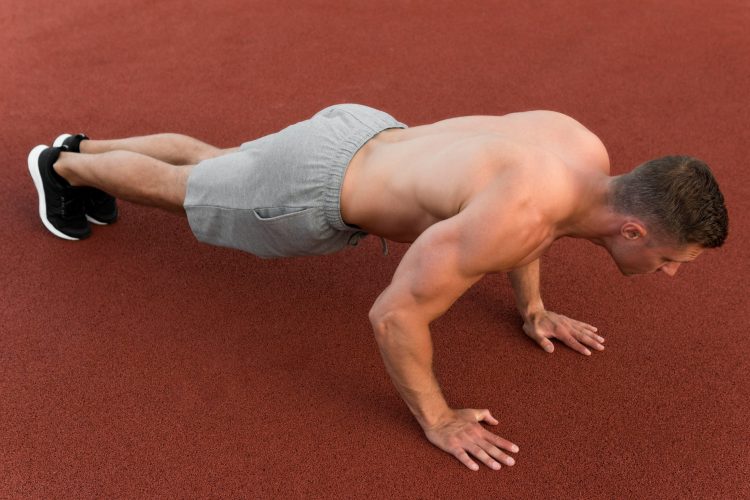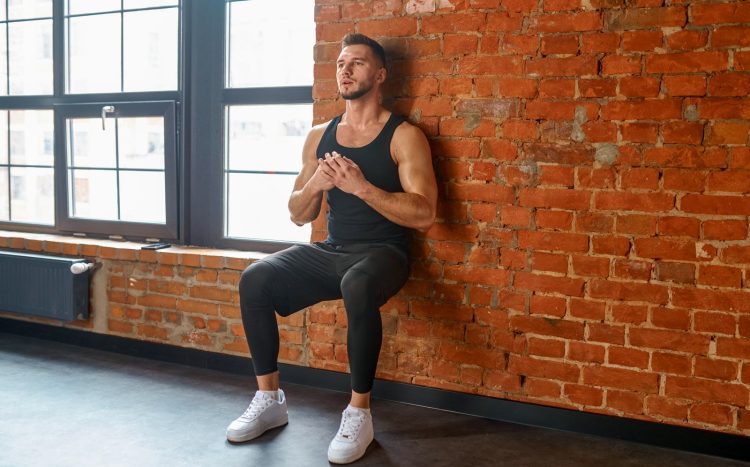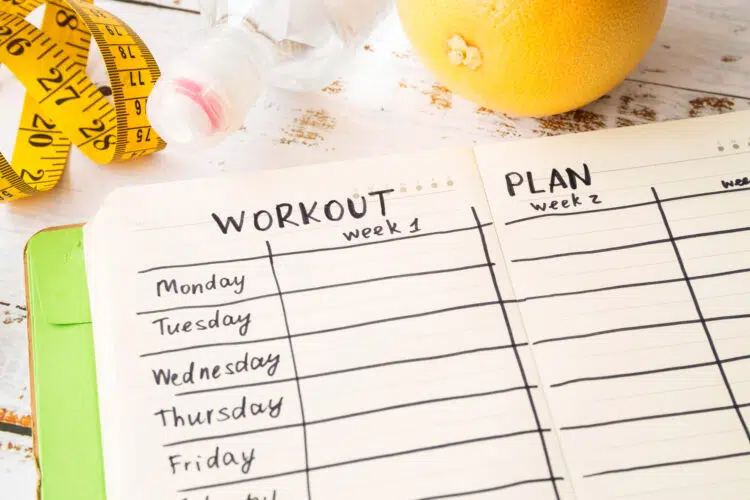Most people who start a fitness transformation give up before achieving their objective. After spending over 70 hours interviewing newbies and experienced trainers, I’ve found that there are two main reasons for giving up on exercise.
First, many beginners find exercising in a gym around fit individuals intimidating. Plus, taking out the time for a regular exercise routine can be very challenging for people with busy schedules.
As a personal trainer with over 17 years of hands-on experience, I can attest that action-oriented objectives are significantly more effective than specific goal-based targets. For instance, individuals who set a goal of running a mile daily will likely fare much better than people who start with a vague goal of losing weight.
Recently, I was feeling overwhelmed with my exercise routine. While my body was begging me for a break, my mind would argue that I was just getting complacent. Before I knew it, one skipped workout turned into a whole week off training, followed by inconsistent workouts.
I knew I needed to make some changes to my exercise routine. After much contemplation, I found the perfect middle ground — habit stacking. The habit-stacking fitness approach involves attaching short exercises to existing daily habits, such as performing wall sits while brushing teeth.
I decided to take things one step further and added a two-minute exercise to each daily habit for 30 days. In this article, I share all the details of this four-week challenge, including the results and how you can include it in your own routine. This is going to be very interesting, so sit tight and read on.
Level Up Your Fitness: Join our 💪 strong community in Fitness Volt Newsletter. Get daily inspiration, expert-backed workouts, nutrition tips, the latest in strength sports, and the support you need to reach your goals. Subscribe for free!
Understanding Habit Stacking
Habit stacking involves adding a new habit to a behavior you perform every day. The concept of habit stacking was introduced by S.J. Scott in his book Habit Stacking: 97 Small Life Changes That Take Five Minutes or Less (2014). James Clear later popularized it in his best-selling book Atomic Habits (2018).
Ideally, you must build simple habit stacking routines that require little effort. You should also pair tasks that can be done simultaneously, like doing push-ups while listening to your favorite podcast.
The Psychology Behind Habit Stacking For Fitness
Most beginners fail to stick to a fitness regimen because they go cold turkey on many of their existing habits and start new ones in their place. On the other hand, the habit stacking protocol leverages the strength of existing habits to build new ones.
The other big factor that works in favor of habit stacking is that you don’t need to carve out extra time or rely on motivation. The new desired habit piggybacks on an existing one, making it easier to stick to.
Habit stacking can help build momentum because they are easy to remember and complete. You want to get to a stage where these habits turn into muscle memory.
“Habits are formed by the basal ganglia, a part of the brain that controls procedural memory. In order to form a habit, it is important to create a routine or ritual around the behavior. This will help to prime the brain and body to execute the habit.” — Andrew Huberman (Associate professor of neurobiology and ophthalmology at the Stanford University School of Medicine)
My 2-Minute Habit Stacking Fitness Routine
Although the habit stacking protocol is pretty straightforward, you must ensure you are pairing the right activities for optimal results. For example, squatting while brushing your teeth involves too much stimulation.
I spent a considerable amount of time constructing my habit stacking fitness routine to ensure I was getting the best bang for my buck. Here are a few habits and the two-minute exercises I implemented into my routine:
Brushing My Teeth & Calf Raises
Most of us begin our day by brushing our teeth, making it the perfect opportunity to incorporate a habit stacking exercise here. I initially started with calf raises on the floor but then progressed to doing them on a small stool for a deeper stretch in the fully lengthened position. (1)
Since brushing roughly takes around two minutes, it is perfect for a habit stacking exercise.
Cooking & Lunges
Cooking involves a lot of waiting time. I decided to leverage that and performed lunges in my living room for two minutes. That’s four sets of two-minute lunges throughout the day.
Checking My Phone & Wall Sits
I usually check my phone every thirty minutes to an hour. In line with my new fitness routine, I did a two-minute wall sit as I scrolled through my notifications and favorite social media apps. Muscle pumps from two minutes of lunges and wall sits are insane. (2)
Watching TV & Plank
Disclaimer: By TV, I mean Netflix and YouTube. I must say, watching TV has never been so painful. I would go as far as to say that I developed a love-hate relationship with watching TV over these 30 days.
Bedtime Routine & Glute Bridges
Every night before I turn the lights off, I scroll Instagram one final time in bed. But this time around, I added a two-minute glute bridge to the mix. I won’t lie; these two-minute holds almost made me give up my habit of checking my phone in bed. I highly recommend this to everyone who feels addicted to their phones.
My 30-Day Habit Stacking Journey
Here is a week-by-week summary of my four-week adventure with the habit stacking fitness routine:
Week One
Don’t underestimate the power of a small task. Finishing a two-minute habit stacking workout can be as satisfying as an intense resistance training workout.
That said, remembering to do the exercises was a challenge in the first week. However, they became more natural toward the end of the week.
Level Up Your Fitness: Join our 💪 strong community in Fitness Volt Newsletter. Get daily inspiration, expert-backed workouts, nutrition tips, the latest in strength sports, and the support you need to reach your goals. Subscribe for free!
Week Two
One of the biggest benefits of doing small workouts is that they give you an energy boost throughout the day.
The exercises started feeling a little easier in the second week and I felt stronger and more flexible and functional. It also made me feel more productive, as I was not wasting any part of the day.
Also, these exercises are potent stress busters and can help improve your mental well-being and overall quality of life. (3)
Week Three
While I had reminders on my phone for these habit stacking exercises during the first two weeks, I didn’t need them anymore in Week Three. Instead, I looked forward to my new fitness habits the same way I looked forward to checking my phone or watching Netflix.
I had days when I felt rushed and overburdened and wanted to skip these exercises. However, you must remind yourself that these two-minute exercises don’t add anything to your schedule. These are things that you are stacking onto your existing routine.
Week Four
I started noticing a slight improvement in my muscle tone and definition in the final week of this challenge, which was a welcome change. This 30-day habit stacking challenge reminded me that you can achieve your fitness objectives with small, consistent work.
I recommend adding exercises you want to improve into your habit stacking routine. All the extra volume will help you drill its movement mechanics and boost your overall performance.
Planning Your Habit Stacking Fitness Challenge
Habit stacking helps you overcome the three most common barriers to a physical transformation — a lack of time, fatigue, and low motivation.
Here are a few tips for integrating habit stacking into your routine by adding small, manageable steps:
1. Identity Your Daily Habits
Each individual has a unique lifestyle. Some might not cook daily, while others might not be in the habit of using their phones in bed. So, you must begin by making a note of your daily habits. These are things that you do daily without much thought.
2. Choose Your Two-Minute Exercise
I would highly recommend picking exercises that you need to get better at. Do you struggle with squats or burpees? These should be a part of your habit stacking fitness routine. At the same time, these exercises should not involve elaborate setups. You must be able to start them at any point during the day and sustain them for at least two minutes.
3. Match Exercises To Habits
This is the tricky part. An exercise must complement your existing habits. As explained above, squatting while brushing might not be the most optimal habit stacking routine, whereas performing push-ups while waiting for your coffee to brew is a great fit.
Tips for Success and Overcoming Challenges For the Habit Stacking Fitness Challenge
Habit stacking usually involves small habits, which are easier to maintain and can lead to greater consistency in the long term.
Like any other fitness routine, the habit stacking routine is all about consistency, dedication, and discipline. You will encounter challenges and hurdles along the way, but you cannot allow them to hinder your progress.
Stay Motivated and Consistent
Although a habit stacking fitness routine isn’t about achieving specific goals, you must have an overarching objective. Aim to make fitness a part of your daily routine to boost your energy levels and overall health and well-being.
Maintain a Journal
If you decide to take on the habit stacking fitness routine as a challenge, I encourage you to maintain a daily journal. It will help you set a baseline and track and monitor your progress. Seeing progress, no matter how small, can be incredibly motivating.
Find a Partner
Do you cook and watch TV with your partner? Why not add them to the habit stacking challenge as well? If you’ve never trained with a partner before, it will completely change your perception of how fun fitness can be.
Overcoming Obstacles
These habit stacking workouts don’t add to your already busy schedule. In fact, they make you more productive. Remember this the next time you feel like you are too busy to do two minutes of exercise.
Dealing With Plateaus
Experienced lifters might encounter a plateau during these 30 days. In this case, I recommend switching the exercise or varying the intensity or duration of your workouts for a new stimulus.
You must learn to listen to your body. Stop if you feel pain during these habit stacking exercises and consult your healthcare provider. Increase the training volume and intensity gradually to avoid overexerting and exposing yourself to injury.
Conclusion
A fitness routine can feel like too much work. After all, you must balance your workouts, meals, and recovery to achieve the desired results. The habit stacking approach involves taking one step at a time.
Instead of following elaborate workouts, you must start with a short exercise. The habit stacking fitness approach concludes that you don’t need a complete life overhaul to get fit. Starting small can make a big difference.
If you have any questions about the habit stacking fitness challenge or need help implementing it into your routine, post your queries in the comments below, and I’ll be happy to help!
References:
- Pedrosa, G. F., Lima, F. V., Schoenfeld, B. J., Lacerda, L. T., Simões, M. G., Pereira, M. R., Diniz, R. C. R., & Chagas, M. H. (2022). Partial range of motion training elicits favorable improvements in muscular adaptations when carried out at long muscle lengths. European journal of sport science, 22(8), 1250–1260. https://doi.org/10.1080/17461391.2021.1927199
- Hirono, T., Ikezoe, T., Taniguchi, M., Tanaka, H., Saeki, J., Yagi, M., Umehara, J., & Ichihashi, N. (2022). Relationship Between Muscle Swelling and Hypertrophy Induced by Resistance Training. Journal of strength and conditioning research, 36(2), 359–364. https://doi.org/10.1519/JSC.0000000000003478
- Hamer, M., Endrighi, R., & Poole, L. (2012). Physical activity, stress reduction, and mood: insight into immunological mechanisms. Methods in molecular biology (Clifton, N.J.), 934, 89–102. https://doi.org/10.1007/978-1-62703-071-7_5












